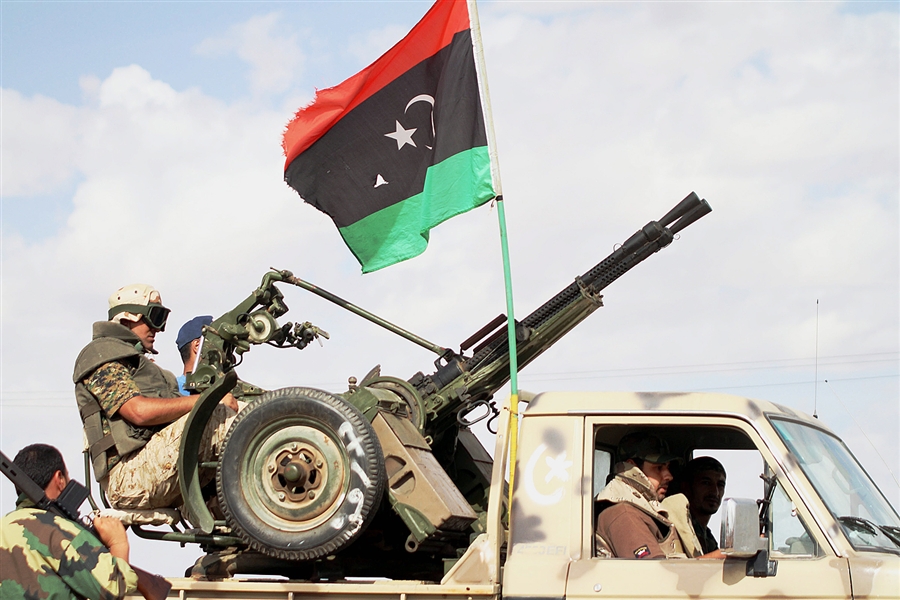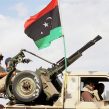
Libya in Anarchy Two Years After Western Intervention
Publication: Eurasia Daily Monitor Volume: 10 Issue: 185
By:

Two years ago, Colonel Muammar Gaddafi’s assassination by Western-backed rebels (October 20, 2011) marked the end of all-out civil war and the collapse of the state in Libya. The United States and the North Atlantic Treaty Organization (NATO) based their case for military intervention on humanitarian considerations. But they also based it on wholesale political miscalculations about Libya itself, and about the “Arab Spring” more broadly. The external intervention, and the local insurgency it fed, paved the way directly for violent chaos. In the rush to intervene at that time, there was no serious planning to safeguard Western interests in Libya regarding oil and gas supplies, migration control, and counter-terrorism (see EDM, August 5, 8, 9, 2011). At present, no attempt is seen in Washington or at NATO headquarters to draw on the lessons of Libya and avert the recurrence of failed interventions with counter-productive outcomes.
The military intervention in Libya was time-limited, but the anarchy in the country continues unabated since then. The situation is now deteriorating even further, in all parts of the country, impacting across Libya’s borders into neighboring countries. Oil and gas supplies to Europe, control of migration to Europe, and anti-terrorism and anti-proliferation efforts have all been set back.
In 2011, the Barack Obama administration and (as a whole) NATO undertook this military intervention reluctantly (the decision’s speed and its rhetoric masked its actual half-heartedness). Once they did intervene, however, Washington and NATO confidently anticipated a democratization of Libya and a reliable security order on a new basis (see EDM, May 18, 2011). They never reckoned with the results that could and did ensue inadvertently from this military intervention. Instead of government change, the unanticipated outcome turned out to be the destruction of governance as such.
State collapse has caused a security vacuum and destruction of any form of order in Libya. Hundreds of informal armed groups, many of them originating in the 2011 Western-supported insurgency, have de facto partitioned the country into spheres of influence (see Terrorism Monitor, August 19, 2013). They are variously based on clan, territorial, and organized crime interests. Jihadist elements are prominent among some of these groups. All of them claim “revolutionary” credentials from 2011 to legitimize their continuing existence as armed organizations. They control government ministries and institutions, town and district administrations, portions of highways, oil installations. Intermittently, they seize government buildings or “arrest” government officials to extort compliance with their demands.
These groups obtained their arms through supply channels organized in 2011 by an ad-hoc combination of Western and Arab Gulf states’ operations (The Financial Times, The Times [London], October 11, 2013). The insurgents then emptied the Gaddafi regime’s abundant arsenals. Some of those arms are now in the hands of jihadi groups in a vast area from Mali to Egypt’s Sinai peninsula. Libya’s official army and police are outnumbered and outgunned.
Many of the unofficial armed groups draw “salaries” variously from the Libyan government, army and police, but seldom obey this residual state. Such payments (mostly drawn from Western subsidies to the government) do not indicate that the informal armed units are in any sense “integrated” with government forces. The payments are a form of extortion. The recipients obey or disobey the government according to their own interests at any given moment. Informal armed groups are variously active in smuggling, arms and drugs trafficking, and “protection” of oil installations, some of which have been seized by such protectors in recent weeks. Unable itself to enforce order, the government is often reduced to asking some armed groups to intervene against other groups in multiple incidents across the country.
On October 10, Libya’s figurehead prime minister, Ali Zeidan, was abducted from a governmental encampment in downtown Tripoli by an armed group that had fought against Gaddafi (Al-Jazeera, October 10). The prime minister was then freed by another armed group. The first group had accused Zeidan of acquiescing to a covert US Special Forces operation that captured a suspected al-Qaeda commander. The second group is one of the many informal armed units that the government pays to avoid even worse excesses. The US-captured commander, known as Abu Anas al-Libi, had been living in Tripoli despite multiple US indictments against him. The government was unable or unwilling to deliver al-Libi (The New York Times, October 11).
Foreign embassies in the country are also unsafe. On September 11, 2012, an assault on the US consulate in Benghazi (“cradle of the 2011 revolution”) killed four Americans, including the Ambassador. The British, French and Italian embassies had to evacuate some or most of their staff from Libya, due to threats of incidents of violence during 2013. In early October this year, the Russian embassy evacuated all of its personnel from Libya to Tunisia following another violent incident (Interfax, October 11).
Western Europe is increasingly affected and the European Union’s border security agencies consider possible ways of containing the situation in Libya. According to these agencies, “The current trend of serious criminal incidents and increased inter-factional clashes will continue, and indications are that it will become more pronounced” (EUObserver, October 14).




